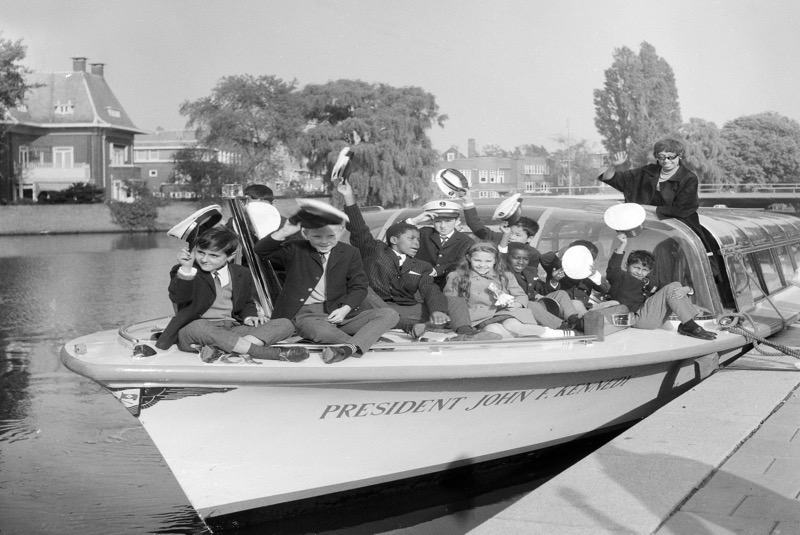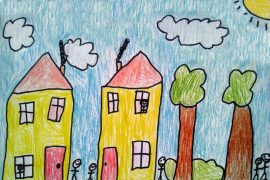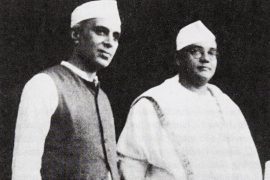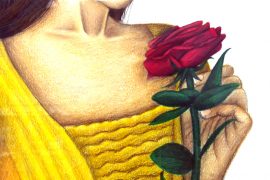In the 1920s, she became the highest-paid performer in Europe, and she is remembered in her banana skirt during La Folie Du Jour at Folies Bergére, France. Josephine Baker was a symbol of Black beauty and a queen of American Jazz in Europe. She bagged commendation for her work in Civil Rights Advocacy in the United States.
Baker’s acts of subversion and daring define her rise to fame; however, in 1950, her “The Rainbow Tribe” stole the spotlight and attracted an eager public to her vast château in the French countryside.
The Rainbow Tribe was Josephine Baker’s adopted family of 12 children: 10 boys and two girls. Now, why did this family become a spectacle to the public eye?
Other than the fact that the first African-American Superstar of the world adopted these children, they all descended from different ethnicities and were raised with a different religion. Baker’s life leads to an assertion of one cause: equality.
Baker was only 19 when she moved from the US to France for an opportunity in the musical La Revue Negre. She quickly rose to fame as the European audience was fascinated with her eccentric costumes and provocative performances. She became a sex symbol and earned nicknames such as “Black Venus” and “Black Pearl.”
Baker was known to be a muse of prominent artists like Langston Hughes and Pablo Picasso.
In 1936, Baker wanted to establish herself at her home base after finding enormous success on the European grounds. She returned to the United States to perform in Ziegfeld Follies; however, the racist crowd reciprocated with malice and hatred. Josephine was outraged by the Americans and quickly returned to France. She then obtained French citizenship and made France her home.
After her service in the Red Cross and to the French Resistance during World War II, her career began to take a back seat. The singer invested the wealth accumulated over years of success to buy the property she had been renting for the past decade. She married her fourth husband, French orchestra leader Jo Bouillon, and decided to start a family; however, the couple could not conceive. They adopted two sons from Japan, which initiated the team of twelve, the Rainbow Tribe.
The Rainbow Tribe became an emblem of her social cause: the possibility of peace and harmony between all races. In an interview with WNYC studio, the author of the book Josephine Baker and the Rainbow Tribe, Matthew Pratt Guterl, discusses Josephine’s intention behind starting a diverse adoptive family.
“As carefully and as deliberately as she can, she’s looking for balance in representation across the spectrum of colors and races and peoples. And she wants a family that serves a deeply symbolic purpose in the context of conversations about decolonisation, civil rights, and human rights.”
Baker and her husband adopted children from Finland, Japan, France, Belgium, and Venezuela. According to Guterl, Baker assigned a specific identity to some children.
She carefully chose the children she adopted, but many planned adoptions did not go through. For example, Baker wanted to adopt a child from Israel, but when that did not go through, she assigned a Jewish identity to one of her children from France.
She wanted to adopt a Native American child, but that did not work out either. Hence, she adopted a child indigenous to South America. Of the two Japanese boys she had adopted, she identified one as Buddhist Korean and the other as Japanese Shinto.
The whole house became a show, everyone playing a specific role. The château turned into a theme park with a cafe, a bar, a Jazz club, a motel, rides, and even a wax studio that narrated her life story.
Central to this theme park was the Rainbow Tribe. Baker even charged her visitors to see the children sing and play, as Guterl describes, “a wall of faces, watching and taking pictures.” The kids appeared in various promotional posters and gave interviews to the press.
The public show of the household has been criticised for violating children’s privacy and exploiting kids. However, the Rainbow Tribe, by their simple existence, was proving Baker’s belief that people of different ethnicities, nationalities, and religions could co-exist like a family during a time that embarked on the fight against racial inequality.
Baker continued to show commitment to her cause in the later years of her life, as she made several trips to the United States to combat racism. She gained recognition from the National Association for the Advancement of Colored People (NAACP) for standing up against segregation. She also remained an active participant in the Civil Rights movement alongside Martin Luther King Jr. NAACP has labelled 20th May as Josephine Baker Day in honour of Baker’s contribution to the American fight against racial injustice.
-30-
Copyright©Madras Courier, All Rights Reserved. You may share using our article tools. Please don't cut articles from madrascourier.com and redistribute by email, post to the web, mobile phone or social media.Please send in your feed back and comments to editor@madrascourier.com











